Going for a walk…but not through the park
April 24th, 2015 | Published in Favorites, Gender; Sexuality
“It’s too dangerous to walk through the park,” my friend said. It was broad daylight on a sparkling autumn day in the “safe city” of Melbourne, soon after a young woman had been killed while walking after school in her own local park.
This comment made me think about the conversations we have about violence against women (that make women responsible) and the ones we need to have (about stopping the violence).
“That’s awful that you feel like that,” I said, knowing how  crippling fear can be, while also knowing that, despite the publicity given to public violence, the greater danger for women (and the leading preventable cause of injury and death in those under 45) is from intimate partners, mostly behind closed doors (click here, and here).
crippling fear can be, while also knowing that, despite the publicity given to public violence, the greater danger for women (and the leading preventable cause of injury and death in those under 45) is from intimate partners, mostly behind closed doors (click here, and here).
Public violence against women is more newsworthy than the everyday domestic variety, although both raise similar themes.
Everyday conversations about violence against women
Following the murder of the young woman in her local park, the chief of the homicide squad issued a warning to women to stay out of parks.
A few days later a priest, speaking of another woman who was raped and killed on her way home from a night out, preached that if her faith had been stronger she would have been home in bed at the time she was attacked instead of out on the street.
Another recent article described a “dress code” (long shorts and baggy shirts) for women in immigration detention in the US, to prevent them being “too provocative” for the guards! One of these ‘guards’ had set himself the goal of having sex with a detainee in every room in the facility.
These kinds of examples (there’s no shortage) put the onus on women to keep themselves safe rather than on men to stop the violence. Nelly Thomas writes that everyone is an expert on what “women shoulda woulda coulda done to protect themselves”.
When I post about the issues on social media, most comments reflect horror at the violence, and dismay at the victim-blaming, but there are always some of this kind:
- Not all men are violent.

- Lots of men hate violence.
- There are females who would stab you just as fast as males.
- Men get killed in parks too.
- The offence is what’s relevant, not the gender of the offender or the victim.
- The cop just wanted people to be safe and doesn’t want to go to murder scenes every day.
While these statements are defensible, they slide away from the topic – of men’s violence against women, which doesn’t disappear because it’s not all men, or because there are other forms of violence, or because attention to safety is important, or even because there’s no simple explanation for male violence or its insidious intersection with racism (see Rob Brooks and Chris Hedges for further discussion of these points).
Comments of the kind I’ve mentioned invariably appear whenever the issue of violence against women is raised, and the conversation invariably goes around in circles, usually with recurrent references to the ‘sexism’ of failing to recognise that men are victims too. This standby NEVER wears thin, WHENEVER gender issues are raised, no matter how many patient explanations are put forward about sexism involving a structural power relation which is UNI-directional.
Reshaping conversations about violence against women
Violence against women is NOT the totality of violence but it is a significant subclass, and a bigger threat to national security than ‘terrorism’ (click here). It needs at least as much consideration.
Here are some thoughts about reshaping the narrative to shift the focus from women’s responsibility to keep themselves safe to men’s responsibility to stop the violence.
- Violence against women occurs in a sociopolitical context of gendered power, a macro context in which men as a class have more structural power than women as a class. Violence by individual men
 (micro level) reflects an abuse of gendered power (macro level) and occurs in a spectrum including everyday street harassment, commonplace domestic violence, rape and murder (click here and here). Addressing this abuse of power involves addressing inequality (click here), and the first step is to put the conversation into the bigger picture of structural power relations.
(micro level) reflects an abuse of gendered power (macro level) and occurs in a spectrum including everyday street harassment, commonplace domestic violence, rape and murder (click here and here). Addressing this abuse of power involves addressing inequality (click here), and the first step is to put the conversation into the bigger picture of structural power relations. - Violence is about perpetrators. Responses like those of homicide squad chief, the priest, and the US detention facility are predictable, but shouldn’t be. Women didn’t perpetrate violence in these cases, so why should they be the ones to stay out of parks, or stay home, or leave home (in the case of domestic violence), or hide themselves (in the case of immigration detention)?
We’d be pretty startled if police and clergy told MEN to stay out of parks, I imagine. And that’s not the answer, but the focus does need to shift from what women should do to keep out of harm’s way to what men should do to stop the violence. - Perpetrators are active agents. Men are responsible for their own behavior. Putting the responsibility on women (for
 being out on the street or in the park, or for not leaving home, or for what they wear or don’t, or for their appearance or state of sobriety) is inappropriate and surely insulting (“She made me do it!” Really?!) Men are active agents, not inanimate, passive hazards (like door handles) and can (theoretically) choose to act in ways that do not endanger the safety of women.
being out on the street or in the park, or for not leaving home, or for what they wear or don’t, or for their appearance or state of sobriety) is inappropriate and surely insulting (“She made me do it!” Really?!) Men are active agents, not inanimate, passive hazards (like door handles) and can (theoretically) choose to act in ways that do not endanger the safety of women.
Conversations about men’s violence against women need to recognise men’s agency. - Rape and murder involve malicious intent. The injuries and deaths caused by violence against women are in a different class to the injuries caused by traffic accidents, for example, which are (mostly) unintentional. Teaching people to take care of their own safety makes sense in many situations of risk, but in the case of violence, this approach needs to happen in conjunction with challenging the malicious intent.
We need conversations that recognise the intent of perpetrators – in lieu of those about women “asking for it”, and as well as those about safety.
Conclusion
For the record, it’s indisputable that not all men are violent, and some women are, and some men experience violence, and many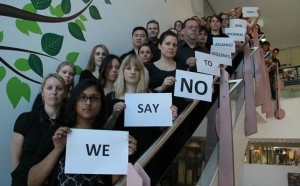 abhor violence, and all violence is abhorrent, and everyone needs to take reasonable care of their own safety, but these realities do not erase the substantial and socially significant issue of violence against women, which needs particular attention in its particular context of gendered power, and with particular emphasis on the behavior of perpetrators as active and intentional agents.
abhor violence, and all violence is abhorrent, and everyone needs to take reasonable care of their own safety, but these realities do not erase the substantial and socially significant issue of violence against women, which needs particular attention in its particular context of gendered power, and with particular emphasis on the behavior of perpetrators as active and intentional agents.
Violence against women is a subclass of violence in general. Addressing it does not negate other forms, and it should be possible to have conversations about it without constant reminders of what it is not.
Scroll down to leave your comments…Joan Beckwith
Also, for associated Facebook page (click here)
And Twitter (click here)

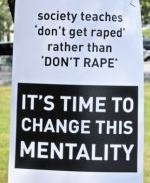

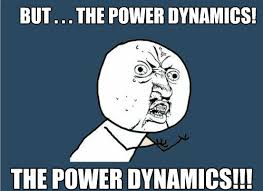
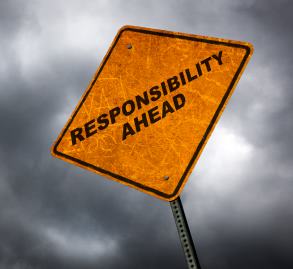
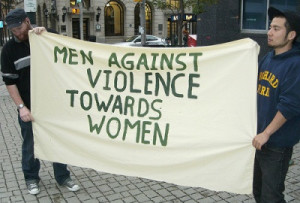



Article by Rodney Vlais who has worked with hundreds of men who use violence against women: http://www.theguardian.com/commentisfree/2014/sep/18/mens-violence-against-women-is-a-choice-by-all-men-everywhere
I was asked by my son in prison to support a reformed and released person who had been incarcerated for pretending to be a 14 yo male using FB to arrange meeting with teenage girls. He presented as having contrition, being reformed and stable in his endeavours to be accepted back into the community. I had a car and he was without transport, so I frequently took him shopping, usually in a large suburban centre with many, many people there. After a few times, when he was lowering his guard, it became apparent that he had not changed, he had in fact progressed in his deformed opinion about women of any age, as being his to mentally salivate over and imagine a potential experience augmented with a series of statements about the clothes teenage women were wearing, their way of walking, talking, the incipient criticism and devaluing comments re-their being teenage girls, in the form of “why are they allowed to wear things like that. They should be told to cover themselves up”, etc. After many months of trying to work with him and his problems I gave up as his friend. I cannot work with him and that awful way of speaking about women, yet I still work as a telephone counsellor in that type of condition. He was attending a forensic psychologist as a release condition, and he manage to convince that psych. that he had improved and was not only controlled, but no longer had his urges. We release these previous offenders into the community without adequate controls and re-training to the extent that they are not just as dangerous as when they went it, but more dangerous because of the newly learned techniques of enticement, approach, self-reinforced behaviour statements based or founded on their previous dangerous needs and desires. He has since finished his parole, and to all appearances re-found religion, and successfully uses this as a way of gaining credibility and social acceptance in our community. We, as a society, have now released another one back into the community without stringent follow up and psych. conditioning, to perhaps re-offend. How, why, where, when are the questions which the community will ask again, when, not if, he re-offends. Many of them are genuine in trying to rehabilitate and change, few are operationally dangerous. Which is which, and how do we protect our community while trying to help them establish their reformed way of life. The many prove to be the successfully reformed ones and an asset to society. The few, smaller number, appear to remain dangerous, and without genuine and extensive rehab and training will become more dangerous. What do we do to make the changes successful and permanent? We must try to do something to help them rehabilitate, BUT we are reducing, not increasing, the monies we put into rehab; WHY. We must deliver on our promises to our children and women in particular, to make and keep a safe place and environment for them to live in AS THE NORM – NOT THE EXCEPTION. We must condition society to change and not effectively imprison our women simply because we fail to educate and modify the behaviour of some of our men.
Thanks, Alex Gartlan, for this thoughful and clearly heartfelt comment (which is quite possibly almost as long as the post itself!)
I think your last sentence says a lot: “We must condition society to change and not effectively imprison our women simply because we fail to educate and modify the behaviour of some of our men.” It IS about a whole-of-society commitment; it IS about changing the violence (not “imprisoning” women; such an apt way of putting it); and it IS about expecting certain standards from all.
Your comment also highlights the way the victim-blaming “she asked for it” narrative is coopted by perpetrators and potentially used as a form of self-justification. There are clearly multiple strands to the process of achieving change, and you have pinpointed several…Joan Beckwith.
National statistics on homicides 2010-11 and 2011-12: http://www.aic.gov.au/media_library/publications/mr/23/mr23.pdf